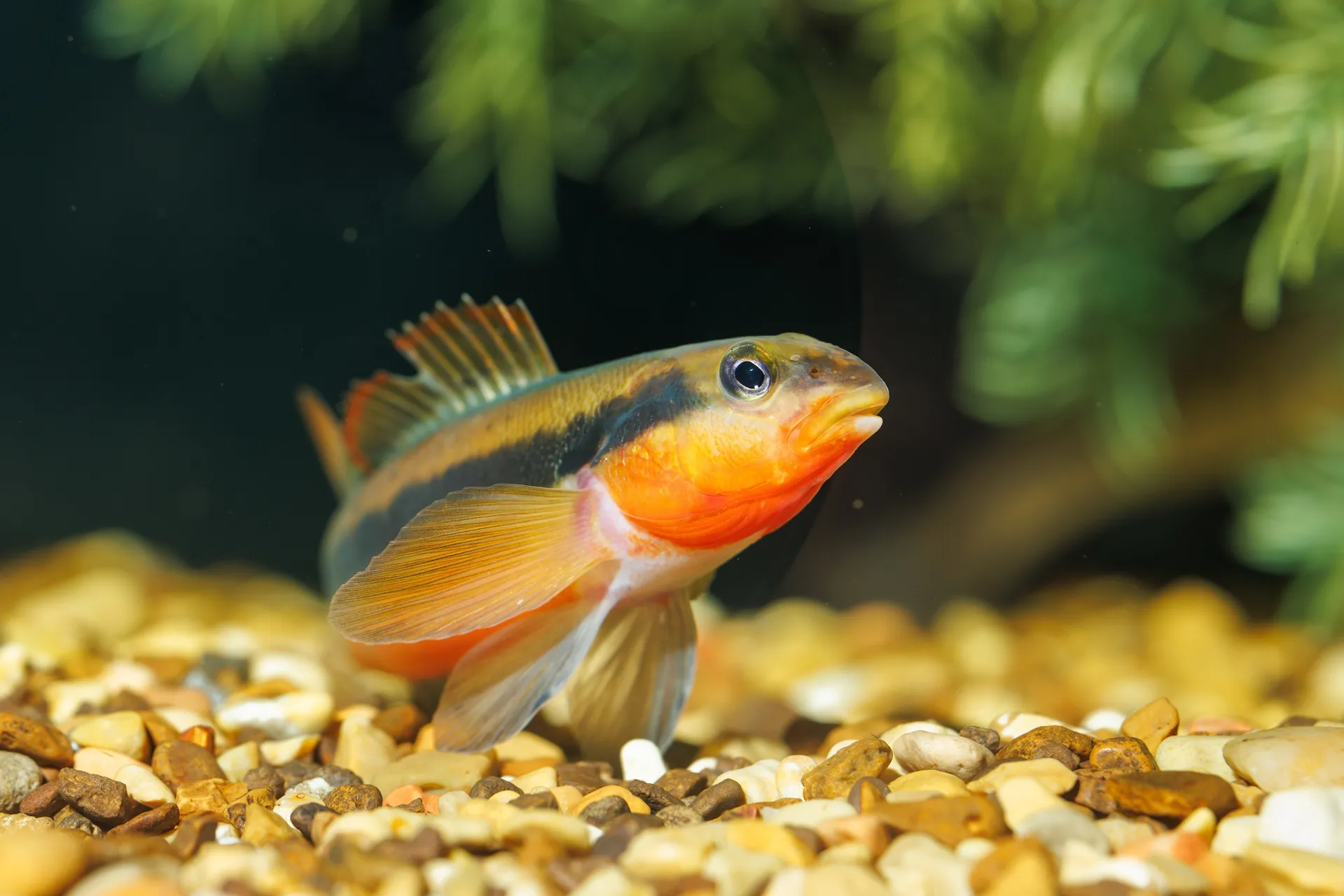Beneath the fast-flowing waters of the upper Tennessee River swims a large and gregarious darter that stands out among a family of otherwise small and secretive fishes.
Flitting among the riffles, runs and pools of pristine aquatic habitats, the Tangerine Darter’s size and striking orange coloration make it instantly recognizable among the dizzying array of fishes that call these waters home. Topping out at about seven inches long — practically a giant among typically finger-length darters — the Tangerine Darter is also a notoriously curious species, fearlessly inspecting nearby snorkelers.
All in all, the Tangerine Darter is a fine ambassador for Tennessee’s life-filled waterways and a vital player in the aquatic ecosystems that keep our drinking water clean and our waters enjoyable for recreation.
What even IS a darter?
Darters are a group of fishes found only in the eastern reaches of North America, from Northern Mexico to Southern and Eastern Canada.
Belonging to the same family as Walleye, Sauger and Perch, darters are sometimes called the “warblers of the underwater world,” because – like the warblers of the sky – they’re usually small, difficult to spot and brightly colored, especially during spawning season.
Most darters don’t have swim bladders. This small, balloon-like organ allows fish to control their buoyancy in the water, moving up and down with ease. Lacking this ability, darters spend most of their time sitting on the bottom of the river when not actively rapidly swimming (darting) around their habitat.
There are more than 200 species of darters, and the greatest diversity of darter species is found right here in the Southeast.
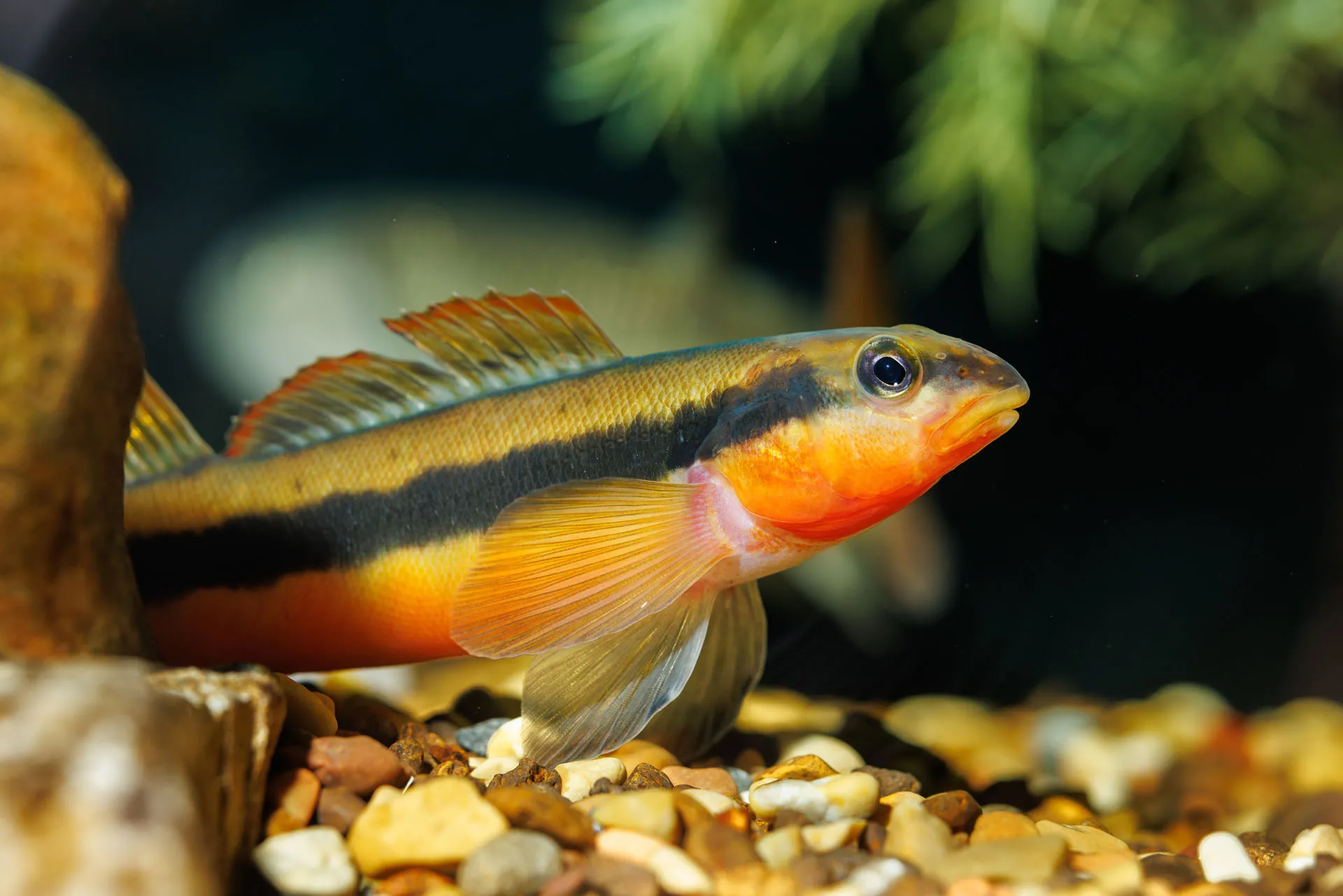
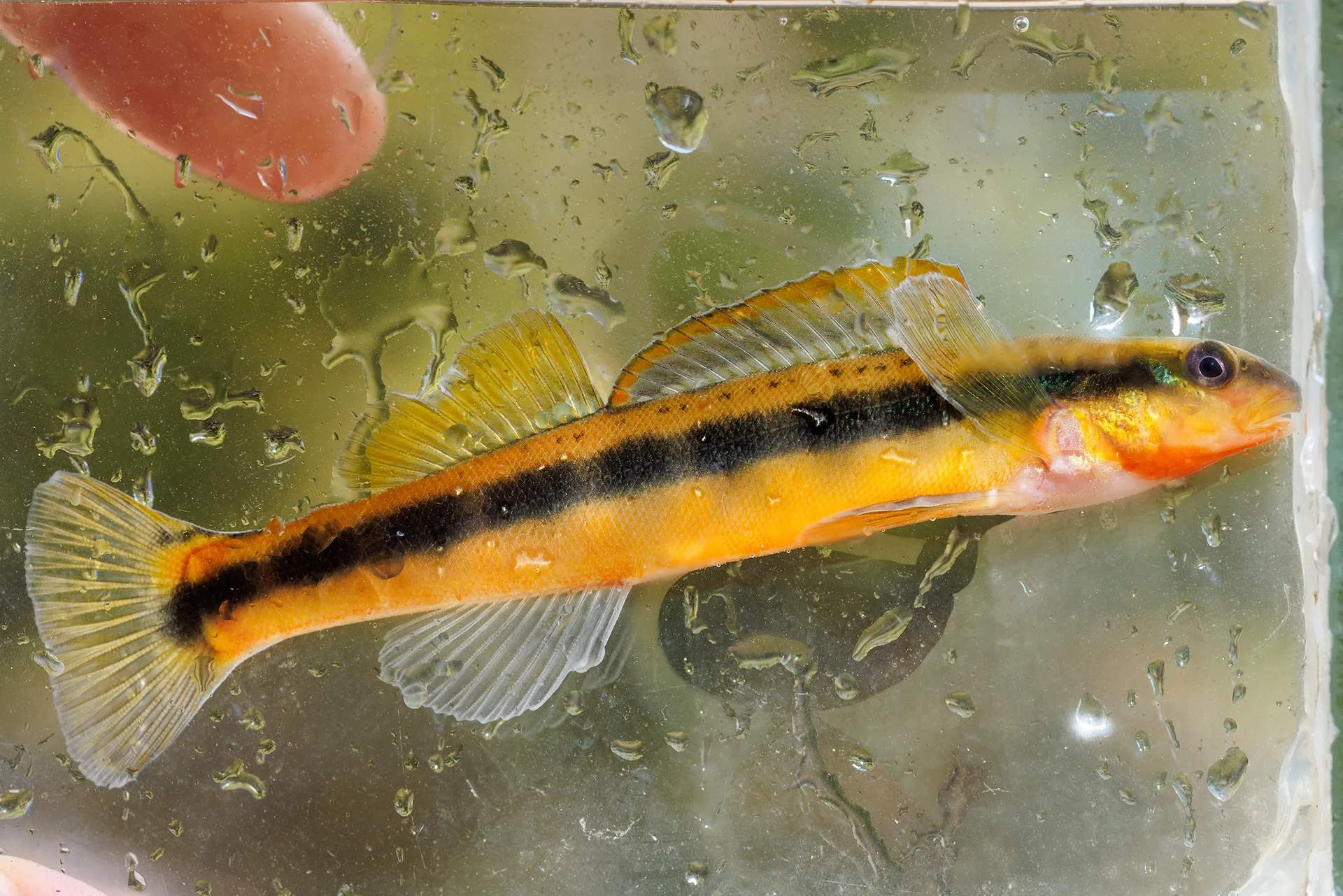
Tangerine Darters: big, bold and brightly colored
Most of the Tangerine Darter’s range is restricted to Tennessee, but they are found in parts of Virginia, North Carolina and Georgia.
“Most of the time where they’re found, they’re the most common, large-bodied darter,” says Aquatic Conservation Biologist Dr. Bernie Kuhajda, who works extensively with Tangerine Darters at the Tennessee Aquarium Conservation Institute.
Kuhajda adds that Tangerine Darters are thriving in their range. Currently, they are listed as a species of “least concern” by the International Union for Conservation of Nature.
While most darters are small, flighty fish that spend their days hiding among the rocks and substrate of river and stream beds, Tangerine Darters are a notable exception.
“They’re one of the bigger darters and can get over seven inches long,” Kuhajda says. “That’s pretty big for what you might typically consider to be a little fish.”
They are also brightly colored. Adults sport intensely orange bellies with distinctive black striping. Still-maturing juveniles patterns tend to be more black-and-white.
Unlike their cousins, Tangerine Darters do have a swim bladder, and they can spend as much as 25 percent of their lives above the bottom of the river. Yet another characteristic that sets Tangerines apart.
“That is really unusual for most darters,” Kuhajda says.
Giant darter, tiny clutches
Wild Tangerine darters typically live to be just over four years old. When they reach two to four years old, they spawn in May and June as water temperatures begin to warm with onset of summer.
When it’s time to spawn, female Tangerine Darters dig into the fine gravel or sand substrate at the bottom of the river. Males then arrive, and breeding pairs will release eggs and milt at the same time before burying the fertilized eggs beneath the substrate.
Tangerine Darters are multiple-clutch spawners, which means that instead of laying a single, massive clutch, they will produce many smaller clutches. A single female may produce 400 to 1,100 eggs in a year via clutches consisting of 50 to 60 eggs.
“The advantage to this is you have a better chance of laying eggs during the optimal temperature and water flow and sunlight if you do it multiple times over the spawning season,” Kuhajda says. “You don’t have — pun intended — all your eggs in one basket.”
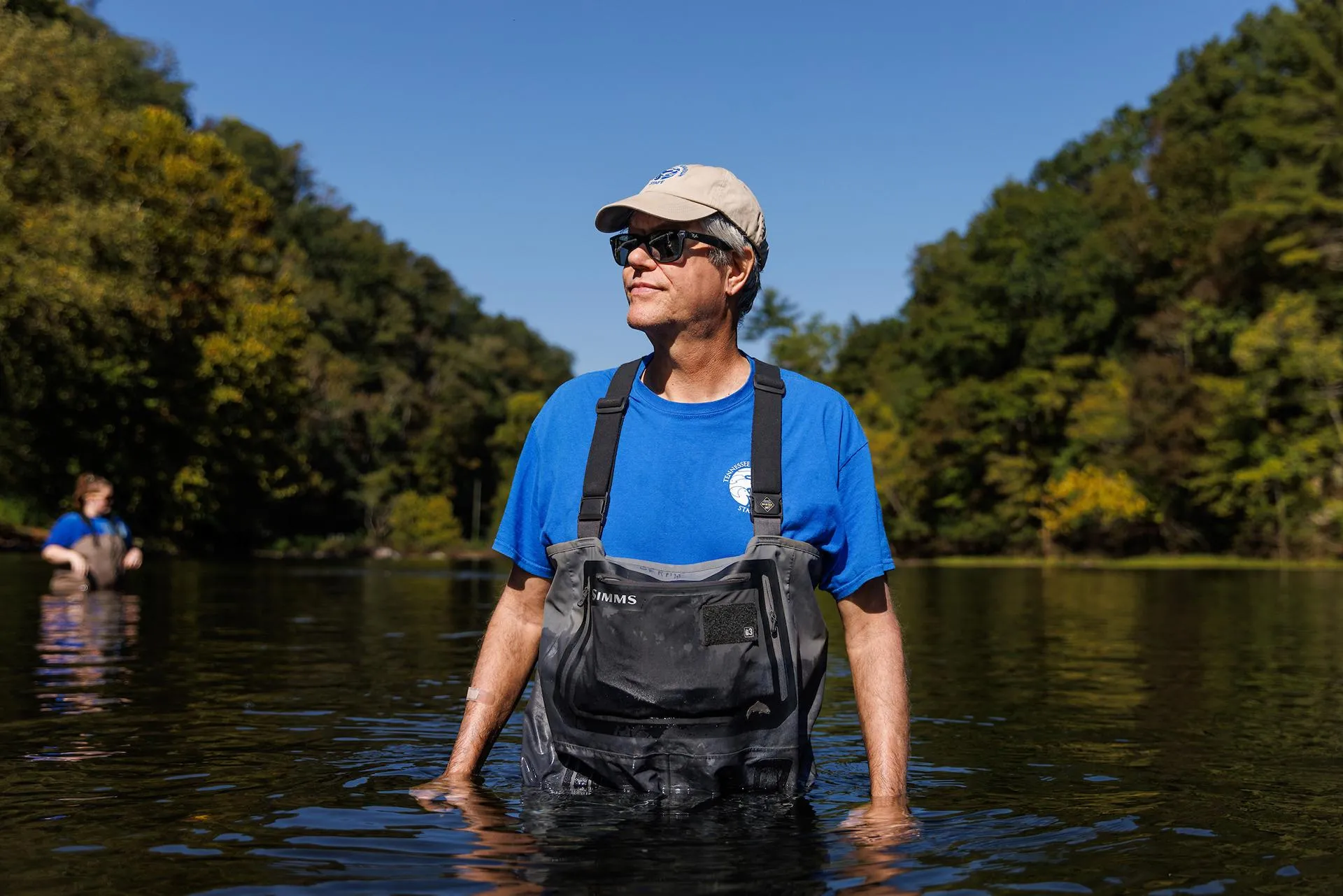
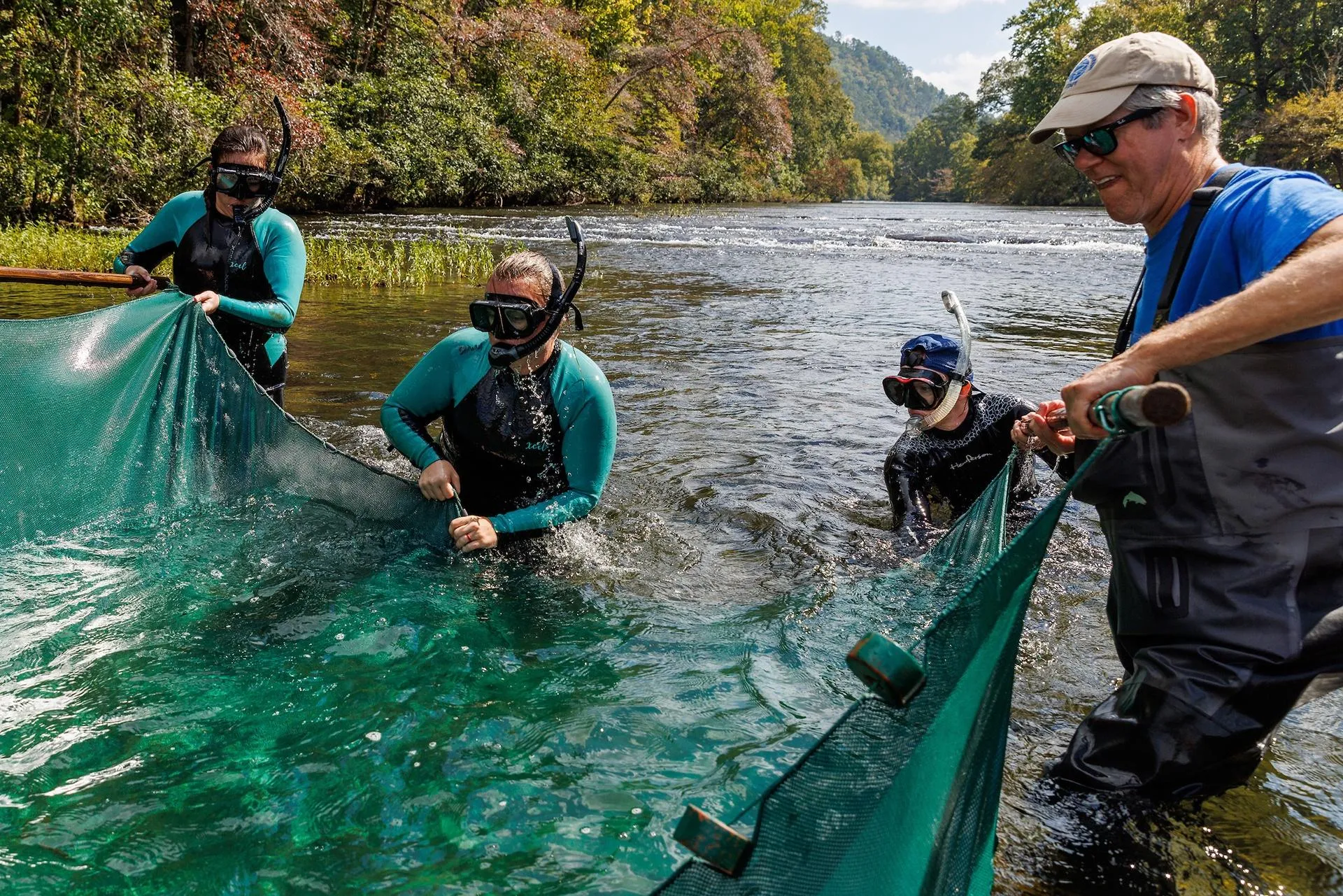
Lending a helping fin
Juvenile Tangerine Darters – and almost all darters – eat larval Midges, the annoying flies that pester boaters, sport fishing enthusiasts and swimmers attempting to enjoy their time outside. Midges lay their eggs in the water, and Tangerine Darters act as a check on the insects’ numbers, eating their offspring, in addition to feasting on Mayflies, Caddis Flies and other aquatic insects.
“Those Midges, they’re annoying,” Kuhajda says, “but can you imagine how bad they would be if you didn’t have any darters around to eat those little larvae?”
Tangerine Darters also serve a vital role in maintaining the health of our aquatic environment as temporary hosts to the offspring of freshwater mussels.
Mussels are nature’s water filter. They feed on broken-down organic matter flowing past them, removing it and ultimately cleaning the water in the process.
All native North American freshwater mussels develop in a larval stage after their eggs hatch. Known as glochidia, these larval mussels must attach themselves to a living fish host to metamorphose into a juvenile mussel. The process is harmless to the fish, but it’s vital for the mussel’s development. Some mussels are generalists and can attach to any fish, but others are specific only to a single family of fish or even a particular species.
“There are a lot of endangered mussels that use darters as hosts,” Kuhajda says. “The bigger a darter, the more glochidia that can attach to it and successfully transform into juveniles.”
Since Tangerine Darters are among the largest darters around, they can host many, many glochidia.
That’s partly why scientists at the Tennessee Aquarium Conservation Institute work with Tangerine Darters, collecting and propagating these fish to use as hosts for endangered mussels in hatcheries run by partner organizations like the Tennessee Wildlife Resources Agency.
No small roles, even for little fish
By helping to save endangered mussels, Tangerine Darters are contributing to improved water quality in our rivers and streams. That makes it safer to enjoy aquatic activities like paddling, fishing and swimming, and it also makes it easier and cheaper for treatment plants to clean our drinking water.
But ultimately, Kuhajda says, conserving aquatic species — all of them — is vital because each one has a role to play in a balanced aquatic ecosystem.
“Every time we lose a species, we lose part of that aquatic web of life that keeps our water clean,” Kuhajda says. “Then our water gets a little dirtier and a little dirtier and a little dirtier.
“By caring about Midges and Mayflies and Tangerine Darters and Snuffbox Mussels, we care about humans, because humans need fresh water.”
